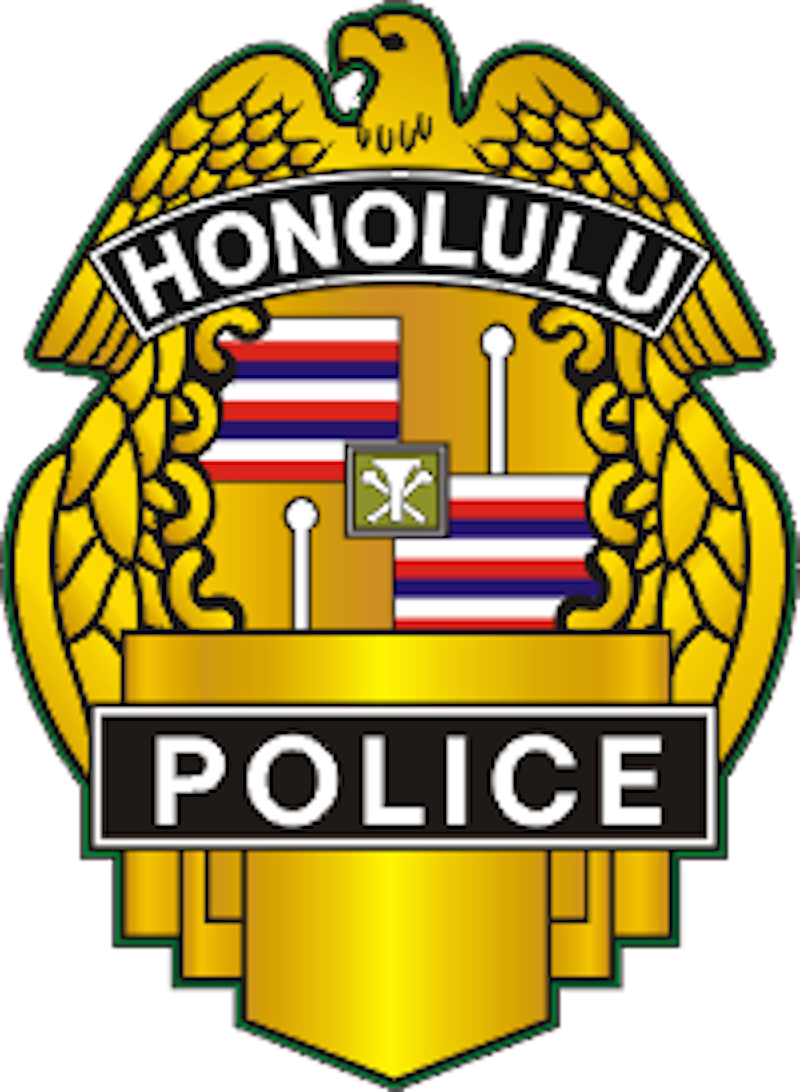The organization of the Honolulu Police Department
is authorized by the Chief of Police. The chain
of command is as specified herein.
DEFINITIONS
The following terms are used throughout the
directive system in relation to organizational
structure and responsibilities.
Bureau: Primary functional element of the department.
Chain of command: A series of positions in order of authority.
District: Primary functional element of a patrol bureau.
Division: Primary functional element of a nonpatrol bureau.
Division-level commander: The person in official command of
an element who reports directly to an officer of the rank
of assistant chief or above.
Element: A term that refers to an organizational component of the department
at any level (e.g., detail, group, office, section, or unit).
DEPARTMENTAL ORGANIZATION
The organization of the department is depicted
on functional and organizational charts. The
charts are reviewed and updated as needed by
the Human Resources Division (HRD) and
accessible to all personnel.
A. The Hawaii Revised Statutes,
Revised Ordinances and Charter of the
City and County of Honolulu, and
departmental directives authorize the
function and organization of the Honolulu Police Department.
B. The departmental organization and
functions are depicted in the attachment.
CHAIN OF COMMAND
A. Sworn Officers
1. The following list of police ranks
(in descending order) is the chain of command
for communicating with superiors and subordinates:
a. Chief of Police;
b. Deputy Chief of Police;
c. Metropolitan Police Assistant Chief;
d. Metropolitan Police Major;
e. Metropolitan Police Captain;
f. Metropolitan Police Lieutenant;
g. Metropolitan Police Sergeant/Metropolitan Police Detective;
h. Metropolitan Police Corporal;
i. Metropolitan Police Officer; and
j. Metropolitan Police Recruit.
2. Within each grade, officers shall be ranked in the following order:
a. Date of appointment to that grade;
b. Date of appointment to the department; and
c. Civil service entrance examination score or
Training Division’s academic test score average
(whichever was applicable at the time of hire) .
NOTE: With the exception of crime scene situations
(see Policy 4.29, CRIME SCENE: INVESTIGATIVE
RESPONSIBILITIES AND PROCEDURES), the highest
ranking officer shall be in command.
B. Civilians
Civilian personnel shall follow the chain of
command for formal communication with superiors
and subordinates in accordance with the
organizational chart or their position descriptions.
C. General Information
1. The chain of command should be used to
ensure that information and instructions progress
properly through command levels and appropriate
authorizations are obtained.
2. Each level of responsibility will be
accompanied by commensurate authority.
3. Supervisory personnel shall be accountable
for the activities of employees under their supervision.
4. In special situations and for specific
periods of time, the Chief of Police may designate
any officer to take command of an element, without
regard to the rank structure or seniority. The
designated officer shall exercise the authority
and perform the duties of, but shall not interfere
unnecessarily with or countermand any orders
issued by, the officer who is normally in charge.
5. If a supervisor is not present, the senior
ranking police officer shall be in command. In the
event that no police officer is present, the senior
ranking civilian shall be in charge.
D. Delegated Authority
1. A supervisor may delegate authority to a
subordinate. Orders given by such proxy shall
bear the authority of the supervisor.
2. Each employee shall be accountable for
the use of delegated authority.
3. In the absence of the Chief of Police,
the senior Deputy Chief of Police will assume
the duties of the Chief of Police. When both
Deputy Chiefs of Police are absent without a
designated acting Chief of Police, the line
of succession to be the acting Chief of Police
will fall to the senior Metropolitan Police
Assistant Chief and so on according to seniority.
E. Unity of Command
1. Each organizational component is under
the direct command of only one supervisor.
2. Each employee is accountable to only
one supervisor at any given time.
F. Span of Control
The following considerations for establishing
span of control for any level of supervision
can enhance direction, coordination, and control of employees:
1. Complexity of the supervisor’s duties and nature of other tasks;
2. Complexity of the subordinate’s duties;
3. Number and effectiveness of control measures;
4. Stability of operations; or
5. Capabilities of the supervisors and their employees.
ASSIGNMENTS
All personnel in the department shall constitute
one entity; within the purview of applicable
collective bargaining agreements, the following shall apply:
A. At any time, personnel may be placed on day
or night duty for any length of time; and
B. Personnel may be assigned or transferred to any division or district.
POSITION DESCRIPTIONS/RESPONSIBILITIES
A. Official job descriptions for all
positions are on file in the HRD. The
descriptions are available to all employees.
B. Personnel are responsible for carrying
out all duties listed in the current position
description and those otherwise assigned by competent authority.
